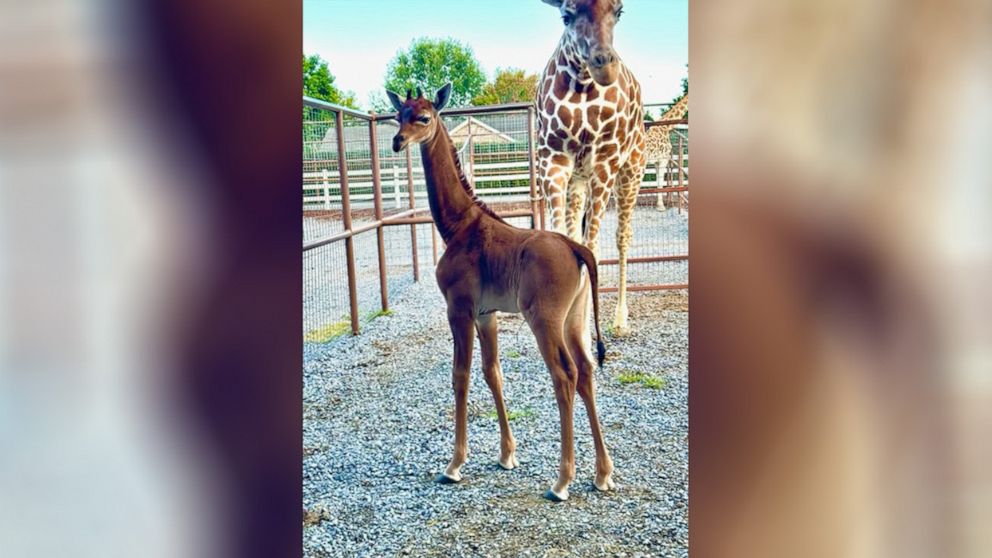


A giraffe calf who was born without any spots officially has a name!
David Bright, the zoo director at Brights Zoo in Limestone, Tennessee, confirmed to "Good Morning America" the reticulated giraffe has been named Kipekee, which in Swahili means "unique."
Brights Zoo held a naming contest for the rare calf on its Facebook page from Aug. 22 to Sept. 4, asking the public to choose from four Swahili name options:
The spotless calf was born July 31 and its appearance after its birth, according to Bright, was "definitely a shock." Today, Bright said Kipekee is "doing well and growing."
"This is our first one without a pattern," said Bright, who has been the zoo director at the private, family-run zoo for the last two decades.
According to Bright, a reticulated giraffe's spotted pattern typically develops in the womb, so giraffes are usually born with their spots clearly visible.
"There's been three others born that look just like her. The last one was Tokyo, Japan [in] 1972," Bright said. "The one before that was four years prior, again in Tokyo, to the same mom, and before that there was one in Uganda."
The zoo's press release said giraffe experts think the solid brown giraffe is "the only solid-colored reticulated giraffe living anywhere on the planet."
Bright said Kipekee's unusual appearance doesn't impact her health and the young calf has otherwise been developing as expected.
"[As] we do for all of our giraffe calves when they're first born, we have vets come in at 24 hours and draw blood again at 48 hours, and that allows us to see where they stand on the chart. And all of her blood work came back great. So that means that we know that she's healthy," Bright said.
MORE: Giraffe gets custom braces made to fix abnormality in her legsKipekee has been doted on alongside the zoo's other calf, a male who was born two weeks before her.
Bright said they hope the zoo's newest arrivals will inspire conservation efforts to protect the endangered animals, who are native to Africa.
"Our first thought was this will be great for conservation. This will draw enough attention to the giraffe species that hopefully we can get more people involved in supporting some of the great giraffe conservation networks that are out there that are doing work in the wild to protect this species," Bright said.